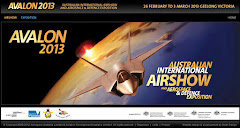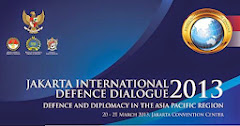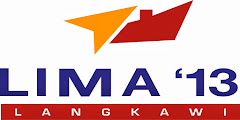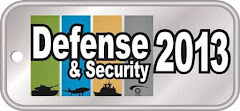16 Oktober 2013
The first two of the Royal Australian Navy's Sikorsky-Lockheed Martin MH-60R Seahawk Romeo helicopters should be delivered in December (photo : Aus DoD)
The first two of the Royal Australian Navy's (RAN's) 24 Sikorsky-Lockheed Martin MH-60R Seahawk Romeo helicopters are on track for delivery in early December as the programme continues to progress ahead of schedule.
Originally developed for the US Navy (USN), Australia became the first international customer for the 'Romeo' version of the aircraft in June 2011 when it announced its selection under Project AIR 9000 Phase 8 to replace the RAN's 16 S-70B-2 Seahawk helicopters in the anti-submarine warfare and anti-surface warfare (ASuW) roles. Denmark has since followed suit, announcing its selection of the Romeo for its maritime helicopter requirement in November 2012.
The first Australian MH-60R made its maiden test-flight at Sikorsky's Connecticut plant on 26 June, six months ahead of schedule and only two years after contract signature. Speaking to reporters at the Pacific 2013 International Maritime Conference in Sydney, Doug Laurendeau, a Lockheed Martin director for business development, said the first batch of Australian MH-60Rs are now undergoing the final stages of systems integration at the company's facilities in Owego, upstate New York.
From there the first two will be delivered to Jacksonville, Florida, where the RAN has established its in-country test and training centre, on 10 December: one month earlier than specified under the contract.
"The folks from [the RAN's] 725 Squadron are already down there [in Jacksonville], both the operators and the maintainers, doing training on US Navy helicopters. So they'll take delivery of the first two MH-60Rs down there," Laurendeau said. The RAN will progressively take delivery of a further five platforms in Jacksonville during 2014. The first tranche of aircraft will then be shipped back to Nowra, New South Wales, at the end of 2014 so that flying can start in Australia in early 2015.
The remaining production aircraft will be shipped to Australia directly from Lockheed Martin's New York facilities. If all goes to plan the final airframe of the 24 is on track for delivery in mid-2016 - two years ahead of schedule.
"We're very pleased with the way the programme has progressed, in terms of being able to deliver early," Laurendeau said.
"We're excited to have Australia as a partner. We appreciate the relationship we've built with them, and we've worked hard to make sure they get a helicopter on time, and it's a programme we're very proud of."
Laurendeau said that to date the USN has taken delivery of about 163 Romeo helicopters out of a planned procurement of 300. "The helicopter has about 150,000 flight hours across the fleet, so it's a mature and stable design, very well appreciated by the US fleet."
Lockheed Martin and Sikorsky, working with the US Naval Air Systems Command (NAVAIR) under the banner 'Team Seahawk ', are exploring a number of international opportunities for the MH-60R variant. In the Asia-Pacific region, for example, India has announced a requirement, while the team is also looking to sales in the Middle East, with the expectation of talks with some of those potential customers progressing to contracts within a year.
"We have definite interest in Southeast Asia. … the missions that made it relevant to Australia also make it relevant to other countries in the region - the anti-submarine warfare version especially," Laurendeau said.
"We're pretty busy in terms of international interest in Romeo, and for good reason. They see the benefits that the US Navy, the Australians and now the Danish navy are garnering from the programme. What's really gotten the attraction of the international navies with Romeo… is that you've got this proven design and very sure delivery schedule," he said. "We're 30 months from contract to delivery with the Australian helos, that's a big deal. We're delivering early and we're able to do that because we've got this production line that's doing low 20s per month. So we're able to add aircraft into that for our international customers and get them very sure delivery schedules.
"And at the same time they are interoperable with US helos and ships. So in a coalition operation you've got that leverage as well," added Laurendeau.
(Jane's)
Langganan:
Posting Komentar (Atom)











Tidak ada komentar:
Posting Komentar